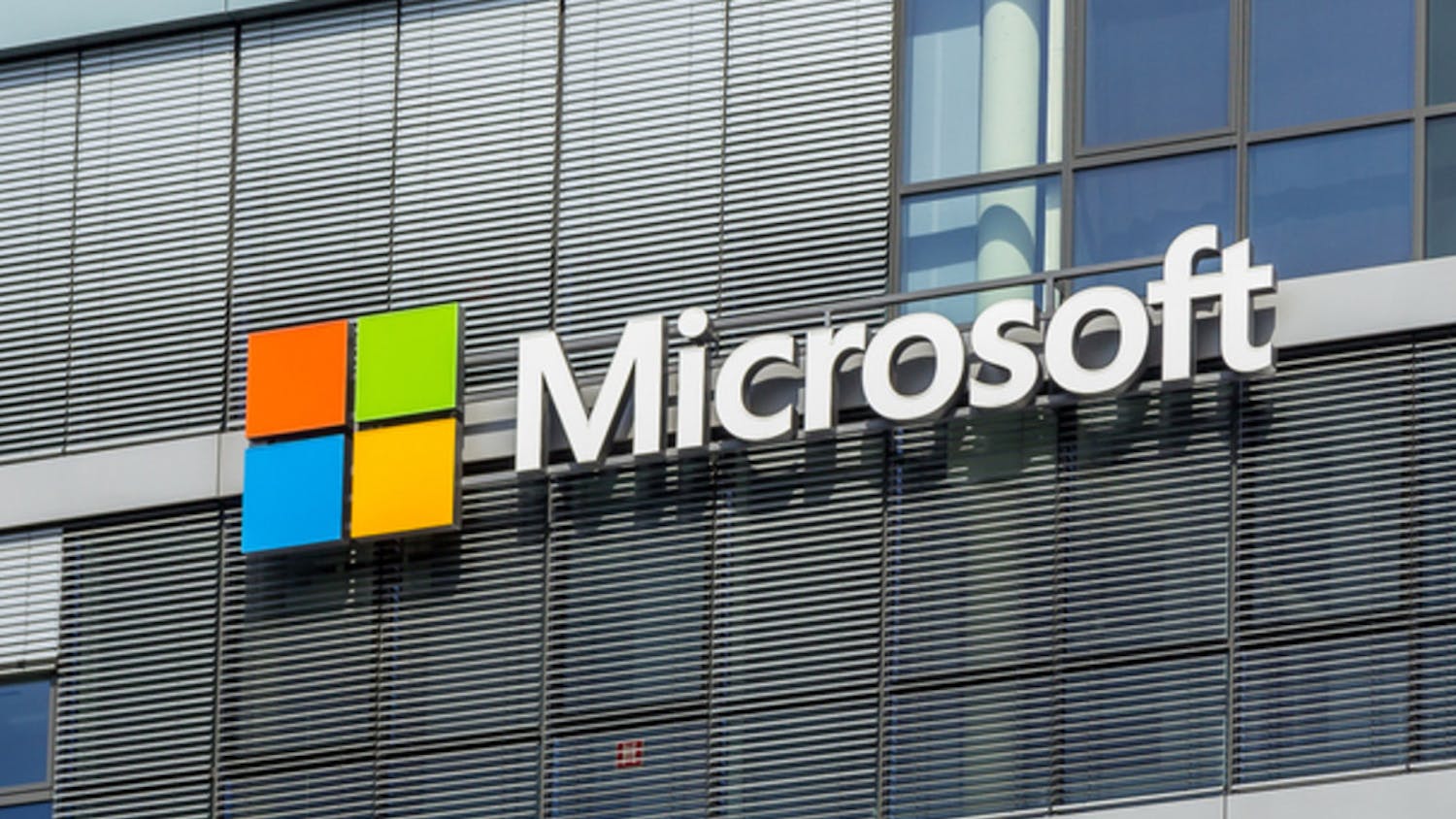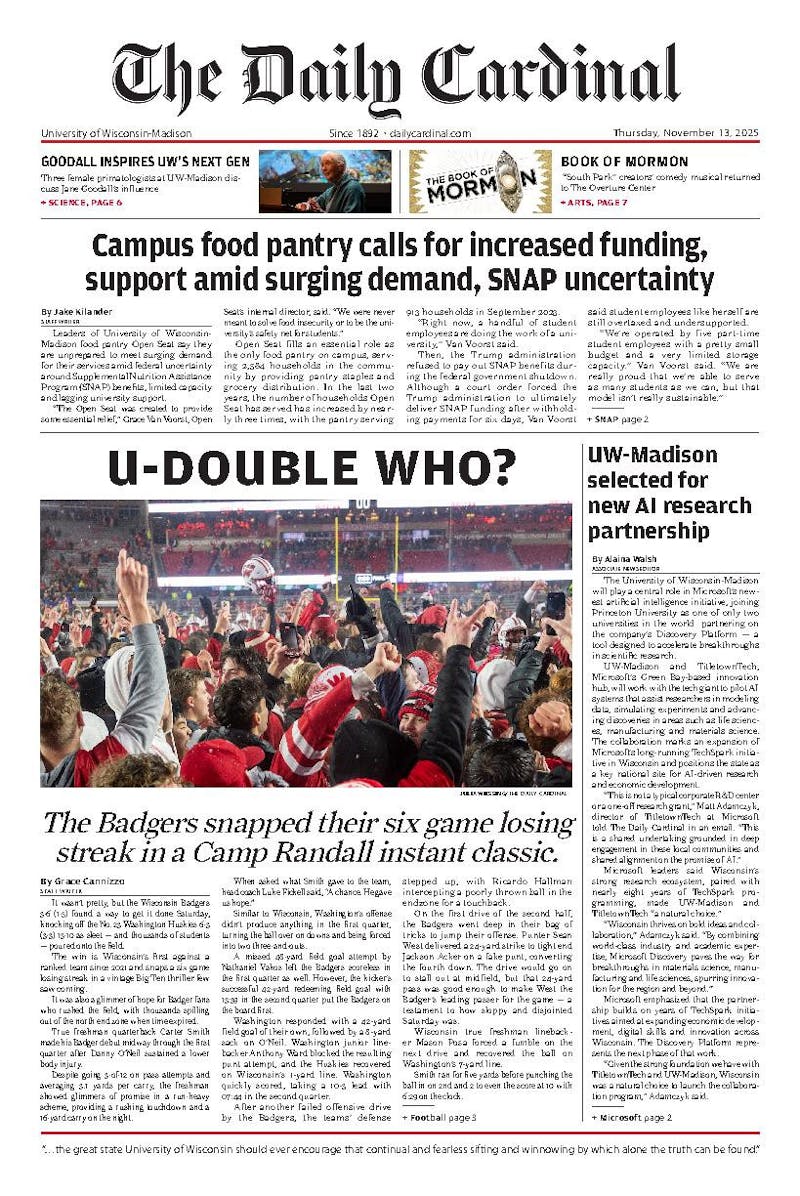A disturbing rash of violent downtown crimes has shaken our campus and city this past year. A lot of lip service has been done by both university and city officials alike about ways to crack down on these acts, but, as seems to be the case with so very many government institutions these days, no one offers much in the way of actual solutions. We might hear the phrase crime task force"" thrown around, or ""downtown safety initiative"" waved about, but these always seem to offer very little in terms of actual, tangible results. To be fair, task forces and initiatives aren't inherently bad things; it's just that they are nebulous by their very nature. They become lines that pad lawmakers and officials' resumes, but many times fail to deliver any specific answers.
Take the recent Campus Safety Meeting held by the Madison Police Department and university officials. Their major solution for increasing campus safety put the burden upon the students to take more responsibility for themselves. Sound advice, thank you for the lecture. After all, they are the resident adults of reason while we remain in our prolonged adolescent fantasy land. That's exactly the solution that the campus-wide community was really hoping to hear from those entrusted with our personal safety. What has failed to appear in any recent discussion is a step by step, comprehensive plan to address and decrease late night crime in an increasingly urban population. We are not trying to solve the world-wide banking crisis. Other cities have been confronted with similar problems, and the smart ones brought out plans that recommended actions that can, one by one, incrementally, moderately, or even drastically improve overall safety. Things like, say, improving street lighting.
Improving street lighting is an action by a city, that if researched thoroughly, designed soundly and implemented correctly, can have drastic effects on overall urban safety. Believe it or not, there is actual robust academic literature on this very subject. In one study, researchers studied 13 British and U.S. cities over a 12-month period of time, observing control areas where street lighting remained unchanged and experimental areas with improved street lighting. The overall reduction in crime after improved lighting was 20 percent in experimental areas compared to the control areas. The change was shown to be even more drastic in some cities. One city experienced a 26 percent reduction in the experimental area, a 21 percent reduction in the area adjacent the experimental area, but a 12 percent increase in the control area. Another city showed a 43 percent decrease in the experimental area, a 45 percent decrease in the adjacent area, but only a 2 percent decrease in the control area.
Other studies have shown the financial benefits of improving street lighting. In Britain, two research projects showed a cost-benefit connection. In one, crimes decreased by 41 percent in the experimental area, compared with a 15 percent decrease in a control area. In the second, crimes decreased by 43 percent in the experimental area and by 45 percent in two adjacent areas, compared with a decrease of only 2 percent in two control areas. In the two cities, the reduction in crimes resulted in financial savings that exceeded financial costs by between 2.4 and 10 times after one year. It was concluded that improved street lighting can be extremely cost-effective. Need I mention that this could also be viewed as a great opportunity for the university to take the lead nationally and apply inventive solar and green technologies in order to solve these problems?
Yet, the most interesting conclusion of these studies might be something entirely different. Although in almost every case the experimental area experienced a dramatic decrease in crimes, the studies did not find that night-time crimes decreased any more than day-time crimes. This is a very significant point, because it alludes to the bigger social and community context crime feeds on, and not the purely surveillance/deterrent/self-responsibility model and so-called environmental measures that have been so mindlessly promoted by university and MPD officials. In fact, most of the data concludes that increasing street lighting plays a bigger role in the psyche of the residents, enhancing their community pride and confidence in the affected area,and also increasing informal social control measures. Not recognizing the re-enforcing the nature of the relationships people have between their perception of their environment and the actual deterrent methods employed is a glaring flaw of reasoning on the part of both the university and MPD.
No one is going to argue that increased lighting will provide physical barriers to crimes. And while lectures about personal responsibility may be needed from time to time, tangible changes to one's environment, changes that show progress, like improving street lighting, may be more important. They can act as a spark - a spark that begins to reduce crime by changing the perceptions and attitudes and behaviors of both residents and criminals alike. Our campus and city are located on a confined isthmus that would lend itself easily to an wide-ranging and innovative project such as increasing and improving street lighting through solar and other green technologies. Beefing up MPD presence during high crime time can only be part of the solution. Addressing street lighting citywide is another proven and cost-effective strategy that should be part of any future discussion about comprehensive campus and city safety.
Joseph Koss is a junior majoring in secondary education in social studies. Please send responses to opinion@dailycardinal.com.





